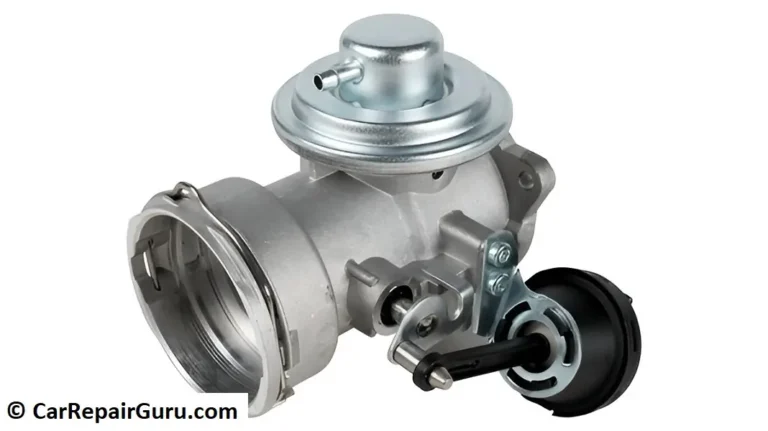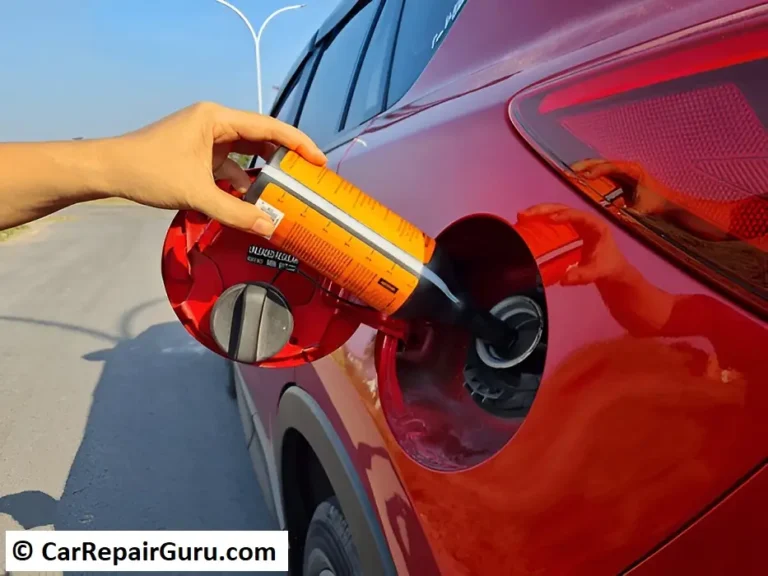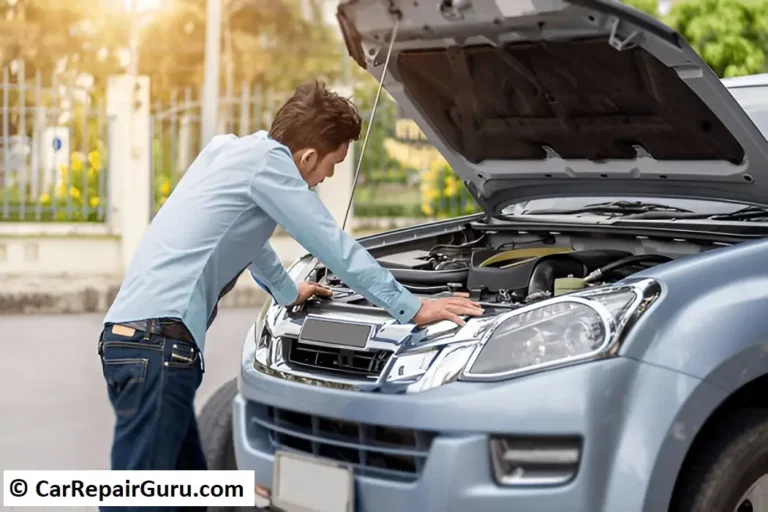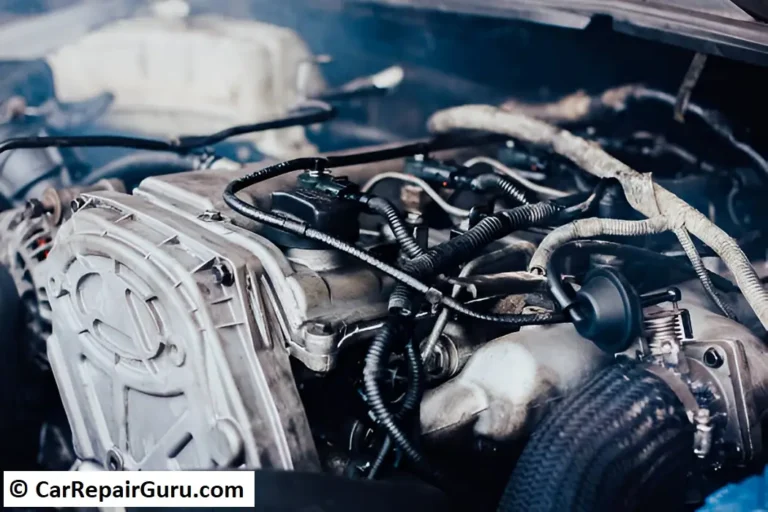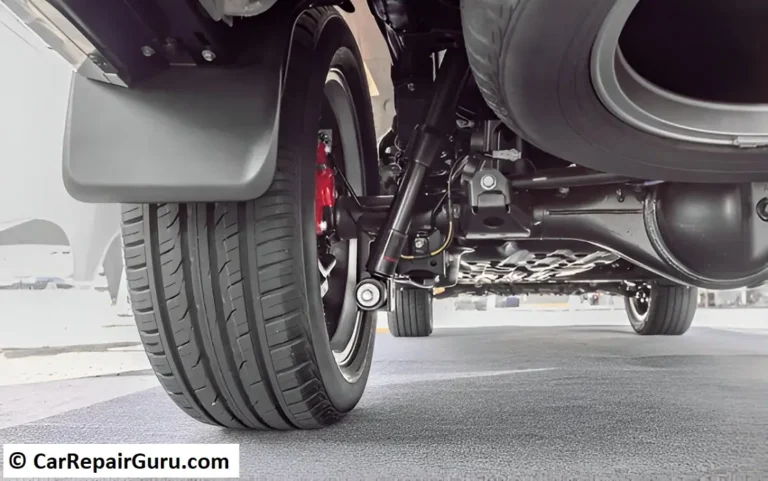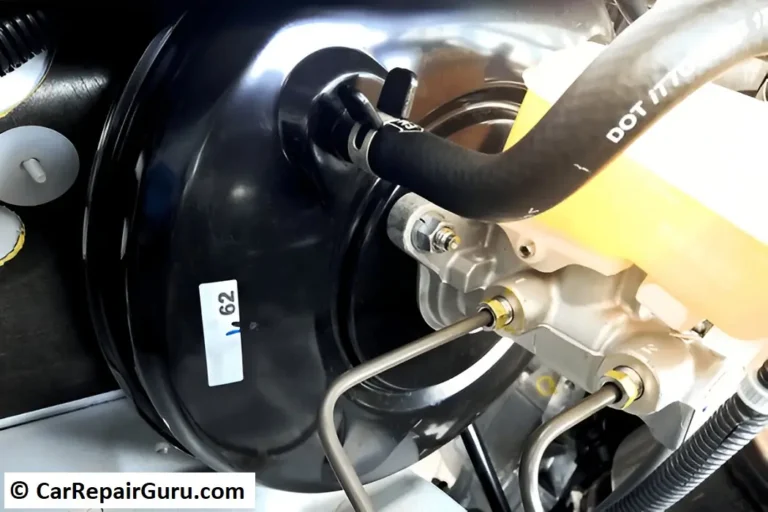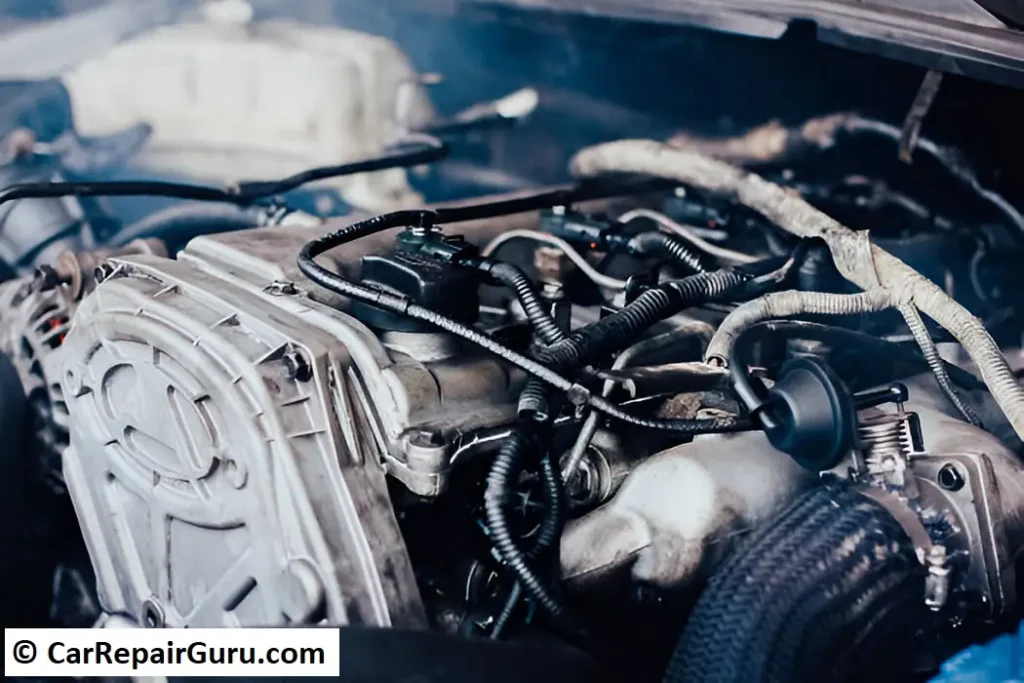
You’re cruising down the road when, suddenly, your car starts jerking, hesitating, or even stalling. That unsettling sensation is known as engine sputtering, and it’s a clear sign that something isn’t right under the hood. Whether it’s an occasional misfire or a persistent issue, sputtering can lead to reduced fuel efficiency, poor acceleration, and even long-term engine damage if left unchecked.
Engine sputtering is often caused by fuel system problems, ignition issues, or airflow disruptions. Common symptoms include hesitation while accelerating, rough idling, and engine misfires—all of which indicate that the combustion process isn’t happening as smoothly as it should. While it may seem like a minor inconvenience at first, ignoring these warning signs can leave you stranded or facing costly repairs.
In this guide, we’ll break down the most common causes of engine sputtering, how to diagnose it, and the best ways to fix the issue before it gets worse.
Common Causes of Engine Sputtering
If your engine sputters, it’s a clear indication that something is interfering with its normal operation. The problem could stem from issues with the fuel system, ignition components, or air intake system—all of which play crucial roles in ensuring smooth engine performance. Let’s break down the most common causes:
Fuel System Problems
Your engine relies on a precise mix of fuel and air to run efficiently. When the fuel system is compromised, the combustion process gets disrupted, leading to sputtering.
One of the most common culprits is contaminated or stale fuel. If fuel sits in your tank for too long, it can degrade and lose its effectiveness, leading to incomplete combustion. Similarly, bad gasoline containing water or impurities can cause misfires and hesitation.
Another issue is dirty fuel injectors. These injectors spray fuel into the engine in a fine mist, but over time, they can get clogged with debris. When this happens, the engine struggles to receive the proper fuel-to-air ratio, resulting in rough idling and poor acceleration.
A clogged fuel filter can also contribute to sputtering. The filter is designed to catch dirt and contaminants before they reach the engine, but when it becomes too dirty, it restricts fuel flow, starving the engine of the fuel it needs.
Finally, a failing fuel pump can wreak havoc on engine performance. The pump delivers fuel from the gas tank to the engine, and if it starts to weaken, your car may sputter, stall, or struggle to start. Addressing these fuel-related issues early can prevent costly repairs down the road.
Ignition System Issues
The ignition system is responsible for igniting the air-fuel mixture inside your engine. If any component in this system is faulty, it can lead to engine sputtering, misfires, or hesitation.
A common cause is faulty spark plugs. These small but crucial components generate the spark needed for combustion. Over time, they wear out, become covered in carbon deposits, or develop gaps that prevent them from firing properly. This can lead to engine hesitation, rough idling, and poor fuel efficiency.
Another issue could be failing ignition coils. These coils convert the battery’s voltage into the high-voltage spark needed to ignite the fuel. If an ignition coil malfunctions, the engine may misfire, sputter, or even stall unexpectedly.
Additionally, damaged spark plug wires can contribute to ignition problems. These wires carry electrical current to the spark plugs, and if they’re frayed or cracked, the engine may not receive consistent sparks, leading to performance issues.
Regularly inspecting and replacing worn ignition components can help prevent engine sputtering and keep your vehicle running smoothly.
Air Intake and Vacuum Leaks
Your engine needs a steady flow of clean air to mix with fuel for proper combustion. When the air intake system is compromised, the engine’s performance can suffer.
A clogged air filter is one of the most common causes of engine sputtering. The air filter prevents dirt, dust, and debris from entering the engine, but over time, it can become dirty and blocked. When airflow is restricted, the engine may struggle to “breathe,” leading to poor acceleration, rough idling, and hesitation while driving.
Another serious issue is vacuum leaks. Your engine uses a network of vacuum hoses to regulate airflow and maintain proper pressure. If one of these hoses develops a crack or becomes disconnected, it can create an imbalance in the air-fuel mixture, causing the engine to sputter, stall, or idle erratically.
In some cases, a faulty mass airflow (MAF) sensor or throttle body issues can also contribute to inconsistent airflow, leading to sputtering and hesitation.
To keep your engine running smoothly, regularly inspect and replace air filters, check for vacuum leaks, and ensure proper airflow into the engine.
Diagnosing Engine Sputtering Issues
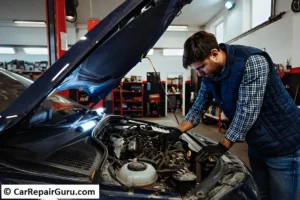
If your engine is sputtering, identifying the root cause is the first step to fixing it. While some issues are easy to spot, others require diagnostic tools and careful inspection. Here’s how you can pinpoint what’s causing the problem.
Check Engine Light and Diagnostic Codes
One of the quickest ways to diagnose an engine sputtering issue is by checking the Check Engine Light (CEL). Modern vehicles are equipped with an On-Board Diagnostics (OBD-II) system that stores trouble codes whenever the engine experiences a malfunction.
To retrieve these codes, use an OBD-II scanner, which plugs into the vehicle’s diagnostic port (usually under the dashboard). Once connected, the scanner will display error codes that can help identify the cause of sputtering.
Here are some common trouble codes related to engine sputtering:
- P0300 – Random/multiple cylinder misfire detected
- P0301-P0306 – Misfire detected in specific cylinders
- P0171/P0174 – Lean air-fuel mixture (possible vacuum leak or fuel system issue)
- P0190 – Fuel rail pressure sensor malfunction
- P0101 – Mass airflow (MAF) sensor issue affecting air intake
If you receive one of these codes, refer to your vehicle’s manual or an online database to interpret the issue. While some fixes are simple, others may require a mechanic’s expertise.
Physical Inspection and Testing
In addition to reading diagnostic codes, a visual inspection can reveal mechanical issues causing your engine to sputter. Here’s what to check:
- Spark Plugs – Remove and inspect the spark plugs for carbon buildup, wear, or damage. Worn-out plugs can cause misfires and rough idling. If they’re dark or covered in soot, it may indicate a fuel mixture issue.
- Ignition Coils – Look for cracks, burn marks, or weak connections in the ignition coils. Faulty coils can lead to irregular sparks, causing hesitation while driving.
- Fuel Injectors – Check for clogged or leaking injectors. Dirty injectors may not spray fuel properly, leading to incomplete combustion and sputtering.
- Vacuum Leaks – Inspect vacuum hoses for cracks, loose connections, or hissing sounds. A leak can cause an unbalanced air-fuel mixture, leading to erratic idling and engine hesitation.
- Air Filter Condition – A clogged air filter can restrict airflow, making the engine struggle to run smoothly. Replacing a dirty filter is an easy fix that can improve performance.
By combining OBD-II diagnostics with a thorough physical inspection, you can identify and fix most causes of engine sputtering before they lead to major repairs.
Effective Solutions to Fix Engine Sputtering
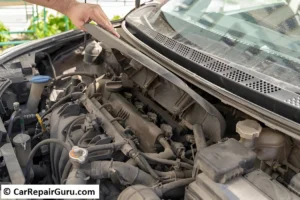
Once you’ve identified the cause of your engine sputtering, the next step is to fix the problem before it leads to more severe engine damage. Whether it’s a fuel system issue or an ignition problem, regular maintenance and timely repairs can keep your vehicle running smoothly.
Fuel System Maintenance
A healthy fuel system is essential for smooth engine performance. If fuel isn’t flowing properly, your engine won’t receive the right mixture for combustion, leading to hesitation, misfires, or even stalling.
- Replace Contaminated or Stale Fuel – If you suspect bad fuel is causing sputtering, drain the old or contaminated fuel and refill your tank with fresh, high-quality gasoline. Adding a fuel stabilizer can also help prevent fuel degradation.
- Clean the Fuel Tank – Over time, debris and sediment can accumulate in the fuel tank, leading to clogged fuel lines and filters. Cleaning the fuel tank during routine maintenance can help prevent future sputtering issues.
- Replace the Fuel Filter – A clogged fuel filter restricts fuel flow, starving the engine and causing sputtering. Replacing the fuel filter every 20,000 to 30,000 miles ensures smooth fuel delivery.
- Clean the Fuel Injectors – Dirty fuel injectors can disrupt the precise fuel spray needed for combustion. Using a fuel injector cleaner or getting a professional injector cleaning can restore proper function and improve engine performance.
- Address Fuel Pump Issues Promptly – If the fuel pump is failing, your engine may not be getting enough fuel to run properly. A weak or noisy fuel pump should be replaced immediately to avoid further damage.
By keeping your fuel system clean and well-maintained, you can prevent engine sputtering and improve fuel efficiency.
Ignition System Repairs
The ignition system plays a crucial role in firing up your engine and maintaining smooth operation. If key components like spark plugs or ignition coils fail, your engine will struggle to run properly.
- Replace Faulty Spark Plugs – Worn-out or damaged spark plugs can cause misfires, hesitation, and rough idling. Replacing them at regular intervals (every 30,000 to 50,000 miles, depending on type) ensures proper combustion. If your spark plugs appear blackened or covered in carbon deposits, replacing them can restore performance.
- Inspect and Replace Ignition Coils – Faulty ignition coils can cause weak sparks, leading to engine sputtering and power loss. If you notice misfires or hesitation while accelerating, check your ignition coils and replace any damaged or worn-out ones.
- Use Quality Replacement Parts – Avoid cheap or low-quality replacement parts, as they can fail prematurely and lead to recurring engine problems. Always opt for OEM (Original Equipment Manufacturer) or high-quality aftermarket parts for better durability and performance.
- Check and Replace Spark Plug Wires – Over time, spark plug wires can become brittle or damaged, causing inconsistent spark delivery. If your wires look cracked or worn out, replacing them can help maintain smooth ignition timing.
By maintaining your ignition system, you can eliminate engine sputtering and improve your car’s reliability. Regular inspections and timely part replacements can prevent costly repairs and keep your engine running at peak efficiency.
Preventive Maintenance Tips
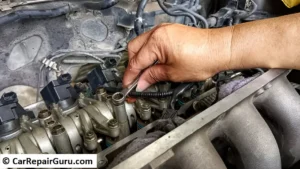
Preventing engine sputtering before it starts is the best way to keep your vehicle running smoothly. With regular vehicle check-ups and simple DIY troubleshooting, you can catch potential issues early and avoid costly repairs.
Regular Vehicle Check-Ups
Scheduling routine maintenance is essential for keeping your engine in peak condition. Many issues that cause engine sputtering—like clogged fuel filters, worn spark plugs, or vacuum leaks—can be detected early during professional inspections.
- Follow the Manufacturer’s Maintenance Schedule – Every vehicle has a recommended service interval for key components like spark plugs, fuel filters, and ignition coils. Following these guidelines helps prevent unexpected engine problems.
- Get Professional Inspections – Mechanics use advanced diagnostic tools to check for potential ignition and fuel system issues before they lead to sputtering. A professional inspection can uncover problems you might not notice during everyday driving.
- Check and Replace Fluids Regularly – Engine oil, coolant, and transmission fluid all play a role in keeping your car running smoothly. Old or contaminated fluids can cause engine hesitation and reduced performance.
By staying proactive with routine maintenance, you can catch small problems before they turn into major repairs and extend the life of your vehicle.
DIY Troubleshooting Techniques
While professional maintenance is important, there are also simple steps you can take to prevent engine sputtering at home. Regularly inspecting key components can help you spot early warning signs before they worsen.
- Check and Replace the Air Filter – A dirty or clogged air filter restricts airflow to the engine, leading to poor acceleration and sputtering. Inspect your air filter every 10,000–15,000 miles and replace it if it looks dirty.
- Inspect Spark Plugs and Wires – Worn or damaged spark plugs cause misfires and rough idling. Remove a spark plug and check for black carbon buildup or worn electrodes. If necessary, replace them with high-quality spark plugs.
- Monitor for Performance Issues – Pay attention to symptoms like rough idling, hesitation, or a sudden drop in fuel efficiency. These could indicate problems with the fuel system or ignition components.
- Listen for Unusual Sounds – A hissing sound could indicate a vacuum leak, while a knocking or rattling noise may point to ignition timing issues. Catching these signs early can prevent bigger problems.
By incorporating these DIY troubleshooting steps into your routine, you can keep your engine running smoothly and avoid costly breakdowns.
Conclusion
Engine sputtering is a warning sign that something isn’t right under the hood. Whether caused by fuel system issues, ignition problems, or airflow restrictions, identifying the root cause early can prevent costly repairs and improve vehicle performance.
By staying proactive with regular maintenance, timely repairs, and DIY troubleshooting, you can keep your engine running smoothly and avoid unexpected breakdowns. Simple steps like checking spark plugs, replacing air filters, and using quality fuel go a long way in ensuring reliability.
Taking care of your engine today means better performance, improved fuel efficiency, and a longer lifespan for your vehicle. 🚗🔧
Engine sputtering (FAQs)
What does it mean when my engine is sputtering?
Engine sputtering is intermittent combustion disruption, causing jerky acceleration, misfires, or stalling. It often indicates fuel, ignition, or airflow issues that need prompt attention.
Can bad fuel cause engine sputtering?
Yes, contaminated or low-quality fuel can clog injectors, reduce combustion efficiency, and cause misfires. Draining the tank and using high-quality fuel may help.
How often should I replace my spark plugs?
Typically, every 30,000–50,000 miles, depending on the vehicle and plug type. Regular inspections prevent misfires and performance issues.
Is it safe to drive a sputtering car?
Not recommended. Sputtering signals fuel, ignition, or airflow issues that can worsen, leading to stalling or engine damage. Fix it ASAP.
Can a clogged air filter cause sputtering?
Yes, restricted airflow creates a rich fuel mixture, leading to poor combustion. Replace your air filter every 10,000–15,000 miles to maintain performance.
